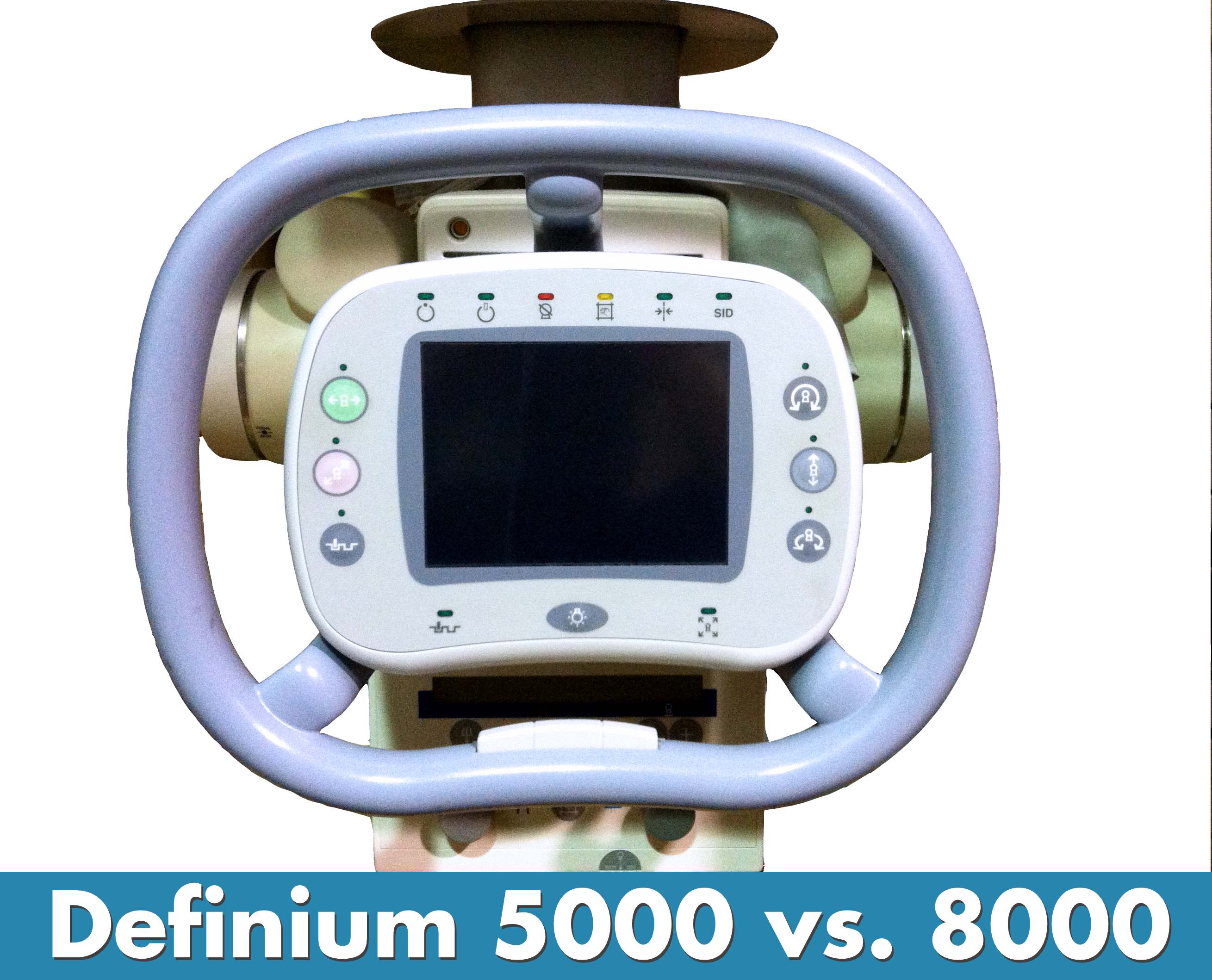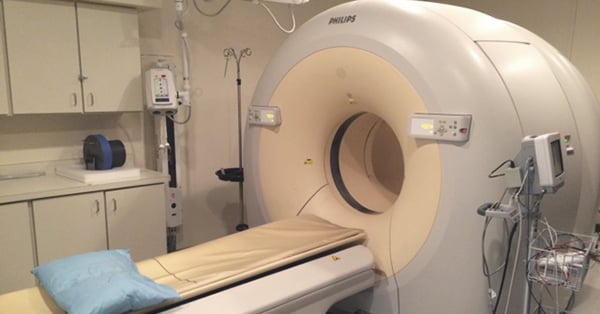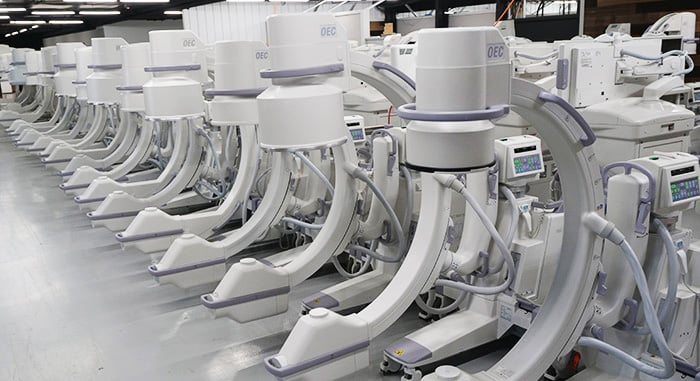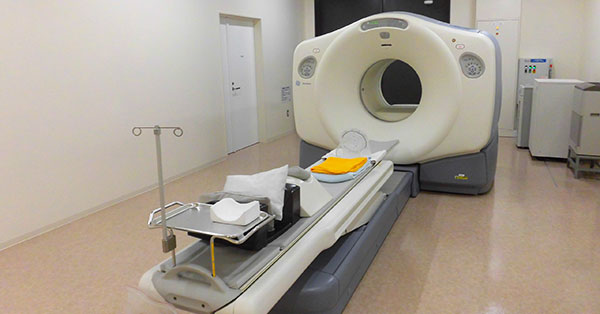
We’re all used to seeing numbers in our imaging nomenclature, right? The number in a CT scanner name is how many slices it takes. The number in an MRI name is how strong the magnet is. But what does it mean when OEMs start adding numbers in the thousands to the names of their digital X-ray machines?
People ask us about these numbers often and, to be honest, we're pretty sure they're just meant to sound "advanced" or "high tech". But what we can tell you for certain are some of the functional specifications of GE’s Definium 5000 and Definium 8000 digital X-ray rooms that will make a difference if you're searching for your best X-ray equipment:
Tube Mounting Style
The X-ray tubes of these two rad rooms are mounted in two ways. The 5000 is a single-piece unit. All components are connected to a single column with the detector and tube moving around the patient via u-arm configuration. The 8000 features an overhead tube that moves on ceiling-mounted rails.
Detector Configuration
The Definium 5000 is a single-detector system. The detector is mounted inside the bucky on the end of the u-arm. The 8000 is available in single or dual-detector configurations depending on whether or not a fixed radiographic table is purchased with the system. If the no-table or mobile table version is chosen, the single detector will be in the bucky on the wall stand. If the fixed-table version is chosen, one detector will be in the wall bucky with a second below the tabletop.
Footprint
Like all u-arm configured X-ray systems, the Definium 5000 has a relatively small footprint. It doesn’t have a table or ceiling rails and its wall bucky and tube support are a single piece. This makes the 5000 highly adaptable to any size of facility, but (unless you purchase a mobile table in addition) limits the types of studies that the system can be used for.
All versions of the Definium 8000 require an entire room with ceiling rails for the tube support. Its largest version features a fixed table and a wall bucky, each with their own digital detector. This version maximizes the types of studies the Definium can be used for.
Automated Positioning
The Definium 5000 features a manual positioning system in which the X-ray technician moves the positioner into protocol positions. The 8000 offers automated positioner movement between protocols for increased workflow.
Price Range
And, of course, one of the most crucial factors in the decision between the Definium 5000 and 8000 is the price. On the secondary equipment market, a Definium 5000 currently sells for around $75,000-$85,000. The two versions of the Definium 8000 that do not feature a fixed table and a second detector sell for around $100,000-$115,000. A full-room 8000 ranges between $165,000 and $175,000.
In spite of the big jump in the model numbers attached to the Definium family and all the factors we’ve just discussed, the biggest difference between these digital X-ray options is end user placement. The Definium 5000 is a good choice for sites with less space, lower patient volume, and tighter budget constraints. The Definium 8000, in all its configurations, will be more at home in a larger facility that scans more patients.
If you're curious to know more about the best digital X-ray equipment for your facility, we're ready to get you informed.

Tony Baggett
Tony Baggett is an X-Ray Product Manager at Block Imaging. Tony assists imaging centers, hospitals, and orthopedic centers in their purchases of x-ray equipment. When he’s not serving customers, Tony can be found hunting, fishing, and camping with his wife, son, and daughter.






